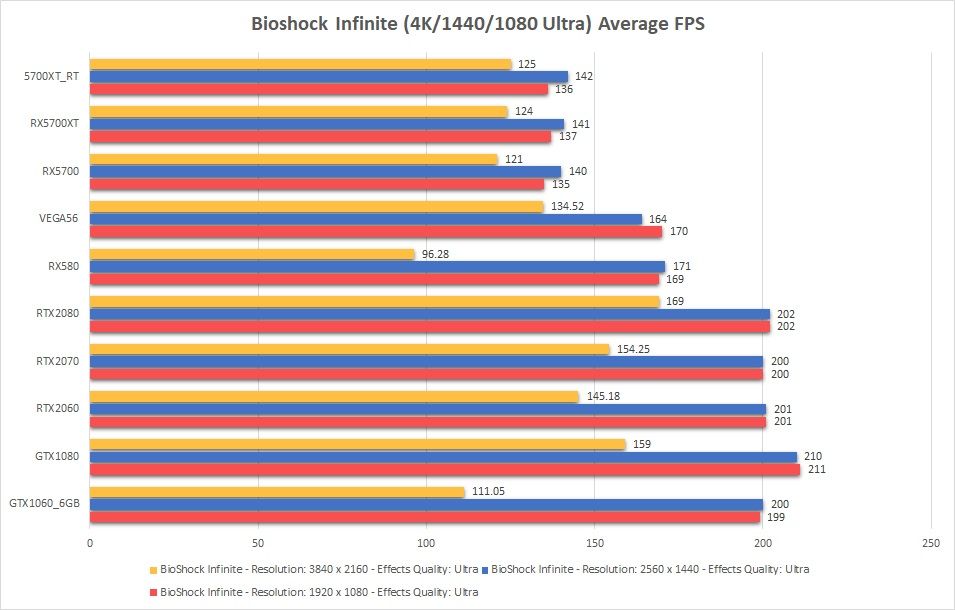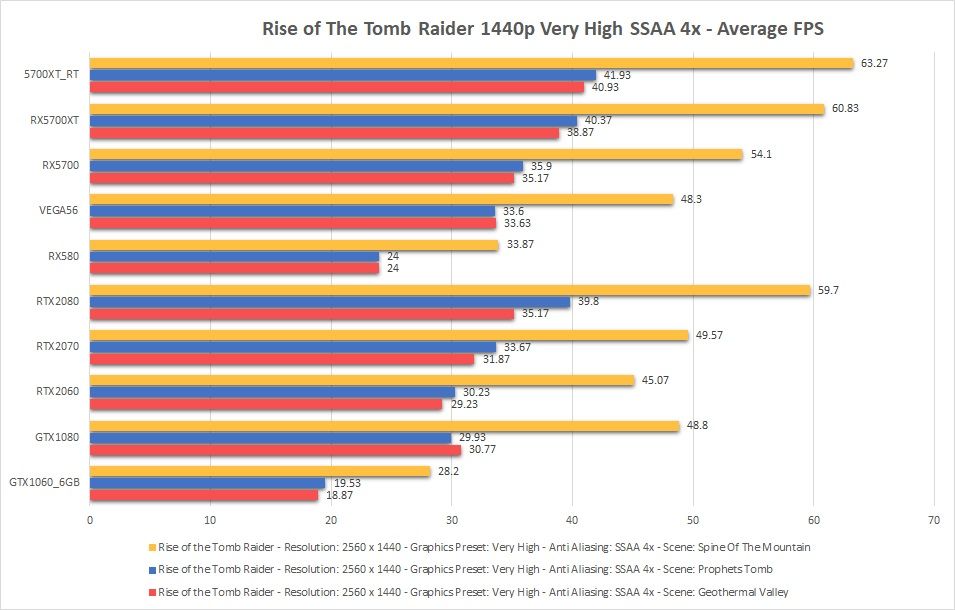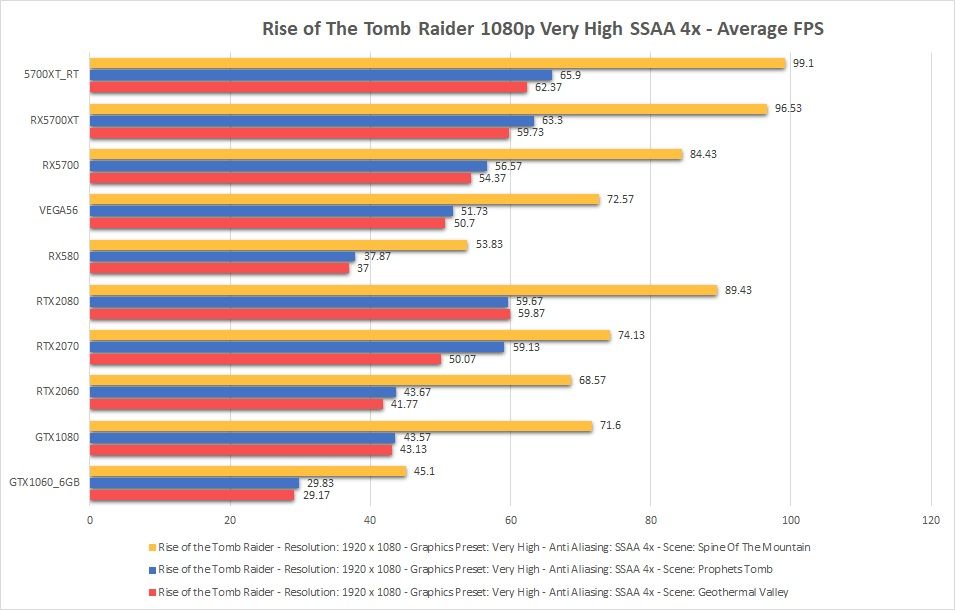
In the days between Computex and E3, a Samsung and AMD’s Radeon Technologies Group publicly announced a licensing agreement. The agreement itself was not surprising, but the details about the architecture code-named Navi were. Several days later, AMD hosted the Next Horizon Gaming event, announcing details on the RDNA name for Navi and the first consumer graphics cards under that architecture. Details were not provided in regards to the licensing agreement. This poses a challenge: How can anyone determine the potential impact of that deal? The answer lies in the graphics cards announced by AMD: the Radeon RX 5700 series.
This review will not only take a look at both the AMD Radeon RX 5700 and RX 5700 XT but also help gather information in regards to the implementation of RDNA by Samsung.
Editor’s Note: The Radeon RX 5700 and 5700 XT were provided by AMD for review purposes. Full list of components and their sources listed later in this article.
Unboxing the AMD Radeon RX 5700 & 5700 XT
We noted in our recent review of the Ryzen 9 3900X and Ryzen 7 3700X that there was a notable shift in international pricing. In Japan, I normally bypassed graphics cards in the same manner as processors. The reason was identical: the price differences between the US and Japan. For a long time that was not the case—I purchased several graphics cards between 2002 and 2005 locally. A look at Amazon in the US, Japan, and UK revealed similar pricing on similar products, while others were not. That’s a great sight to see, and I hope that this remains the norm rather than the exception.
The boxes for both the 5700 and 5700 XT look sharp. It’s a very simple design for both, easily allowing the focus to be set on the graphics card itself. The shroud on both keeps it simple. The bend on the 5700 XT is also fitting in the context of the “bend the rules” text printed on the box. Power for both is connected by a 6+2 and 6 pin and use a blower design for cooling. The 5700 is easily identifiable by the lack of a backplate and closed end of the shroud, as well as the lack of bend seen on the 5700 XT.





















Testing Setup
Since the 5700 Series is compliant with the PCIe 4.0 specification, it seemed the right way to test these was using an X570 motherboard for testing. Beyond that we kept the remaining hardware as-is, limiting the variables in testing the graphics cards. We continued to use the same test environment from the 3900X/3700X review, only adding the tests we intended to use. Amdgpu-pro drivers were required for testing the 5700 and 5700XT so they were used for testing all AMD graphics cards. NVIDIA’s 430.26 package was used for all applicable graphics cards. Since 4K testing required a 4K display, tests were conducted on a Samsung 4K TV.
As we have done with previous reviews, we will identify the components and how they were acquired. Motherboard BIOS versions are also provided.
Test Bench Configuration
- Lian Li PC-T60 Test Bench – Self-purchased
- Corsair TX750M – Self-purchased
- GIGABYTE X570 AORUS MASTER – BIOS N9 – Provided by AMD
- AMD Ryzen 9 3900X – Provided by AMD
- G.Skill Flare X 2x8GB – 3200 MHz, CAS14 – Provided by AMD
- Samsung MZ-VLW512A – Self-purchased
- Deepcool Captain 240 EX – Fans from the same kit – Provided by Deepcool
- MSI AC905C Wireless Network Card
- Samsung UN50NU6900 – Self-purchased
Graphics Cards
- Sapphire RX580 8GB – Self-purchased
- EVGA GeForce GTX 1060 6GB – Self-purchased
- HP Geforce RTX 2080 (believed to be from PNY, blower-style) – Self-purchased
- MSI GeForce GTX 1080 Founder’s Edition – Self-purchased
- Powercolor Red Devil Vega 56 – Provided by Powercolor
- AMD Radeon RX 5700 – Provided by AMD
- AMD Radeon RX 5700 XT – Provided by AMD
- ZOTAC GAMING GeForce RTX 2070 MINI – Loaner from Shannon Robb
- MSI GeForce RTX 2060 6GB – Loaner from Shannon Robb, cannot recall variant
Testing Methodology
With this review, we have started to formalize our graphics tests with an extensive list of tests using a single graphics card. Based on the time it required, we decided to whittle some of that down, a good decision that helped when we ran into a few issues during testing. This will be a work-in-progress for the time being, and we invite any reader suggestions or requests on specific tests to include.
We are also looking at ways to capture the GPU sensor data in an alternative manner than using monitor=all when running the Phoronix Test Suite. So far, psensor did well in displaying the data on the screen. We will continue exploring that in order to log graphics card sensor information. Emphasis is being placed on this due to some of the information we gathered during these tests, discussed later in this article.
Also under consideration are tests by tier. The graphics cards in the test group primarily target 1440p and 4k resolutions. Tests at 1080p with the settings at maximum quality were conducted since those tests, if any, would be the most demanding at that resolution. Graphics solutions that primarily target 1080p and possibly 1440p resolutions—such as integrated graphics—will have more tests at those tiers and less at higher resolutions.
The 5700 XT was retested after updating all Ubuntu 18.04 LTS packages and amdgpu-pro due to abnormal results in our original tests, which are discussed further in the test results. Some of the original results did not occur, but crashes were occurring during tests of Rise of the Tomb Raider. There is a variance between this test and the previous one, so we will include both sets of results. Dawn of War III did not run on the 5700 Series.
Test Results
Benchmark Notes: Phoronix Test Suite’s GPU suite offers a plethora of tests but not all are included in this review. The full list of tests conducted and their results are available here, except for the results from our recent retest of the 5700 XT which are available here. In general, we exclude tests that were not completed on all test configurations. We also exclude cases of extremely abnormal results, which happened this time in Tesseract and OpenGL vs Vulkan testing.
While testing the 5700 and 5700 XT, even with amdgpu-pro installed, we ran into several significant issues. PowerPlay threw a series of overheating log entries on multiple occasions for the 5700 and 5700XT. There were also multiple shutdowns, which was expected due to exceeding thermal limits. This is the reason for placing a priority on sensor data and also retesting the 5700 XT.
After reviewing the retest data, we believe that the initial tests were still valid and contained accurate results. We apologize to readers for the delay in both validating the results and sharing those results as part of this review. Tests will be grouped by program, where we took the highest sample for each resolution that contained results for all GPUs tested. The color scheme for benchmarks continues to follow XDA’s traditional color scheme: yellow for 4K, blue for 1440, and red for 1080.
Bioshock Infinite
It’s not surprising that every card tested in this group fares well at both 1080 and 1440 resolutions. Both AMD and NVIDIA results are grouped fairly well, but there are some outliers. Both the RX580 and GTX1060 have a sharper drop-off at 4K. That’s expected as both are not designed for gaming at those resolutions.
The other outlier is the Radeon Vega 56 which jumps ahead of the 5700 and 5700 XT at every resolution. Although we never published our review of that GPU, the Powercolor Red Devil Vega 56 has oddly performed far beyond my expectations. In this case, the Vega 56 performed about 16.4% lower compared to the GTX 1080 Founder’s Edition. We’re also missing the GTX 1070, a better comparison for our Vega 56. We believe this will be rectified by the time our next graphics card review comes out.
Deus Ex: Mankind Divided
Deus Ex: Mankind Divided remains a punishing benchmark regardless of which company’s graphics card is tested. This round was no exception—not a single GPU in the test group reached an average of 60 frames per second. We’ve come to expect that which is why we do not use Ultra on 4K and instead use the High preset. 1440 and 1080 are still run at Ultra settings, and our results have become a good bellwether of the norm.
Both AMD and NVIDIA cards group fairly close, with fewer outliers than the Bioshock Infinite test. Vega does follow the expected trend of results at 1440, falling behind the 5700 Series with both having noticeable gains. We also see the gaps between the 5700/2060 and 5700 XT/2070 close significantly.
Unigine Superposition
We did not get full results for Superposition at Ultra on 1440p. We are providing the High results instead, which results in the large jumps at 1440 on the chart below.
Another extremely punishing benchmark in Linux has been Unigine Superposition. The Radeon RX 5700, which is compared most often to the RTX 2060, edges out against its competitor. The 5700 XT and RTX 2070 are close, with NVIDIA having a slight edge at both 1080 and 4K but losing that edge at 1440. The unknown is the RTX 2080. A very noticeable jump occurs on it at 1080 and 1440 in comparison to its siblings. But when we get to 4K testing, we don’t see the same effect. With many more tests already planned, it will be fascinating to see how this fares in those future tests.
Unigine Valley
The test results between Heaven and Valley continue the trend we saw in Superposition. The 5700 series does well in these cases, sometimes taking the top slot and sometimes not. The 2080 remains a very strange outlier as well. The NVIDIA graphics cards we tested see a sharper drop when going to 1440, the target resolution for the 2060/2070 and the Radeon RX 5700 series. When we step up to 4K the drop is extremely sharp on the Radeon side of the house, but still edges out the 2060 and 2070.
Rise of the Tomb Raider
We held this one for last because there are a lot of graphs for this. To keep it simple, we’re going to include 3 slides below, one for each resolution. FXAA typically resulted in a rough doubling of the average frame rate over SSAA 4x. As they are more demanding, we are showing the SSAA 4x results in this article.
At 4K, we get a good understanding of how things fare since 1080 and 1440 results are similarly grouped. I’m not surprised that AMD’s lineup did well here. We do have a few surprises in these, though. The 5700XT holds its own compared to the RTX 2080, and as noted earlier, we even see the Vega 56 keeping close to the GTX 1080. The Radeon RX 5700, RTX 2070, and RTX 2080 each see an uneven stepping between tiers, especially in comparison to the Radeon RX 5700 XT and RTX 2080.
Moving on down to 1440, we see frame rates double from the 4K tests. Other than that, they stay pretty consistent with the 4K results.
Finally, at 1080, it appears that the frame rates roughly triple over the 4K resolution results. What I found impressive is that someone playing at 1080 could still have the dials on max and still be demanding for the graphics card.
Samsung and RDNA
During the Tech Day that AMD held in Los Angeles, we did ask to see if there was going to be any further details about the licensing agreement with Samsung. AMD said that further information would have to come from Samsung. With that being the case, Samsung will probably give some but not all of the details. This was evident in a statement during their most recent earnings call, sharing a rough estimate that products with RDNA technology would arrive about 2 years later.
That’s not to say there aren’t ways to infer some information. For example, the overheating seen in the Radeon RX 5700 series would definitively be on Samsung’s radar. While it would probably survive another Galaxy Note 7 fiasco, it could pose a serious issue with its customers—both personal and business. Regardless of their involvement beyond licensing, AMD will want to make sure that this partnership puts its best foot forward on the initial product launch. With that in mind I believe it is fair to expect heavy testing before a product launch. It’s basic risk management and as such a reasonable customer expectation.
Then there’s also AMDGPU—the driver version in the Linux kernel. Over the past several years, AMD has pushed to improve its Linux support, but they faced a challenge in getting that approved for the main Linux kernel source. They’ve had measurable success and movement in that—and more is coming. We can see that Navi is already supported when going through public information such as patch notifications.
Since that’s Linux and not all the changes get pushed to the Android version, it made sense to pull a recent kernel from Samsung to see if anything on AMDGPU is in their source. The answer was yes, but what was in there is an older version that hasn’t seen patches or revisions for some time. Short of more information from Samsung, this will be the most likely spot to have available information made public.
I’ve also heard rumors that the development phase is at a point of engineering samples and kernel testing. This has not been confirmed, but it would make sense. Most organizations don’t make announcements like the one between AMD and Samsung until it’s almost certain to happen. Given that this is in regards to our primary coverage, XDA readers can rest assured that we will be on the lookout for more information, and when found will do our best to keep readers informed of new developments.
Final Thoughts & Conclusion
I came into this review hoping to answer a few questions. It’s a new architecture and new GPU, and those each bring in additional questions.
Was there day one support for the RX 5700 series? The answer was yes. Were there issues as well? Yes, and that in itself is not a surprise. The temperature issues, by far, are the most concerning. The engineers who will be handling the development and implementation for Samsung are hopefully keeping this on their radar. We even started to figure out how to get information to speculate further on Samsung’s implementation. Outside of the kernel, we won’t be able to see much. Readers shouldn’t be surprised at that; we’ve seen that for years now. That means the gaps will require some sort of speculation and then possibly testing to prove or disprove theories.
I continue to maintain a review is only the beginning of a discussion and not the end. It may take a while for RDNA-based graphics cards to get in their groove. We saw some similar cases when Ryzen arrived on the scene and a year later, we saw many of the primary concerns addressed. I am still concerned about the overheating, but there’s a lot AMD can do to further address that.
Just like AMD’s Ryzen lineup, the 5700 Series seems to continue the new mantra: Be competitive, offer a good price, and bring products that are in the range of most consumers. For AMD’s continued success, they don’t need to be on top. NVIDIA and Intel can do that more easily. It took them years to not only realize that but then bring that vision to reality on the CPU side. And now it seems as if they’ve reached that point on their consumer graphics lineup.
It’s a great time to be a consumer. Choices are always a great thing, but they’ve not always been available over the past years. That’s changing. It’s like going to a family dinner where there’s tons of food to choose and they’re all family favorites. Who’s going to complain about having too many good options?
How do you feel about the RX 5700 series from AMD? Is this something that you feel merits consideration? Or do you believe it’s still out of consideration for specific reasons? Let us know either in the forums or in the Disqus comments below!
The post AMD Radeon RX 5700 Series Review: First Look at Navi and RDNA appeared first on xda-developers.










0 comments:
Post a Comment